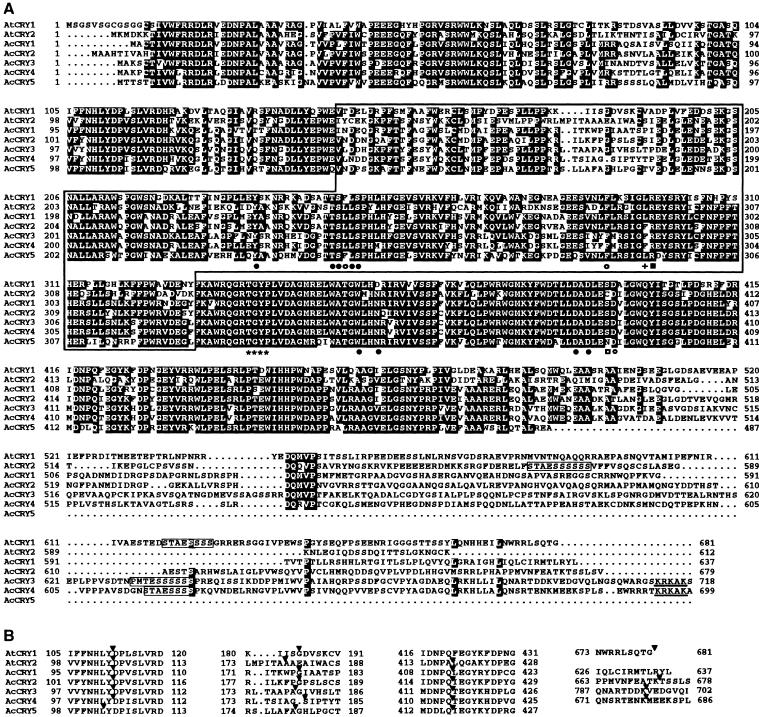Figure 1.
Alignment of Amino Acid Sequences of Arabidopsis and A. capillus-veneris Cryptochromes.
The deduced amino acid sequences of A. capillus-veneris (Ac) CRY4 (AcCRY4; DDBJ accession number AB028928 for the cDNA and AB028930 for the gene) and CRY5 (AcCRY5; DDBJ accession number AB028929 for the cDNA and AB028931 for the gene) are compared with Arabidopsis CRY1 and CRY2 (AtCRY1; Ahmad and Cashmore, 1993; and AtCRY2; Lin et al., 1996a), and the three previously identified A. capillus-veneris cryptochromes, CRY1, CRY2, and CRY3 (AcCRY1, AcCRY2, and AcCRY3; Kanegae and Wada, 1998). Sequences were aligned by using the Clustal W program, version 1.74 (Thompson et al., 1994). The numbers at the ends of amino acid sequences indicate the positions of amino acids. The gaps are shown by dots.
(A) Residues present in four or more of the sequences are highlighted (BOXSHADE; http://ulrec3.unil.ch/software/BOX_form.html). The positions of 14 amino acids found in E. coli photolyase to interact with FAD by either direct H bonds (circles) or indirect H bonds (squares) are indicated below the alignment. The amino acids that are conserved between E. coli photolyase and cryptochromes are marked with closed circles and a closed square, and those that are not conserved are marked with open circles and an open square. The TGYP motif (asterisks) and the position of Trp-277 of E. coli photolyase (plus) are indicated below the alignment. STAESSSS motifs found in the C termini of cryptochromes are enclosed with boxes. The putative nuclear localization signals found in C termini of CRY3 and CRY4 are underlined. The N-terminal regions within the lines were used to construct the phylogenetic tree shown in Figure 8.
(B) The intron insertion positions of cryptochrome genes are indicated by the arrowheads on the partial amino acid alignment.

